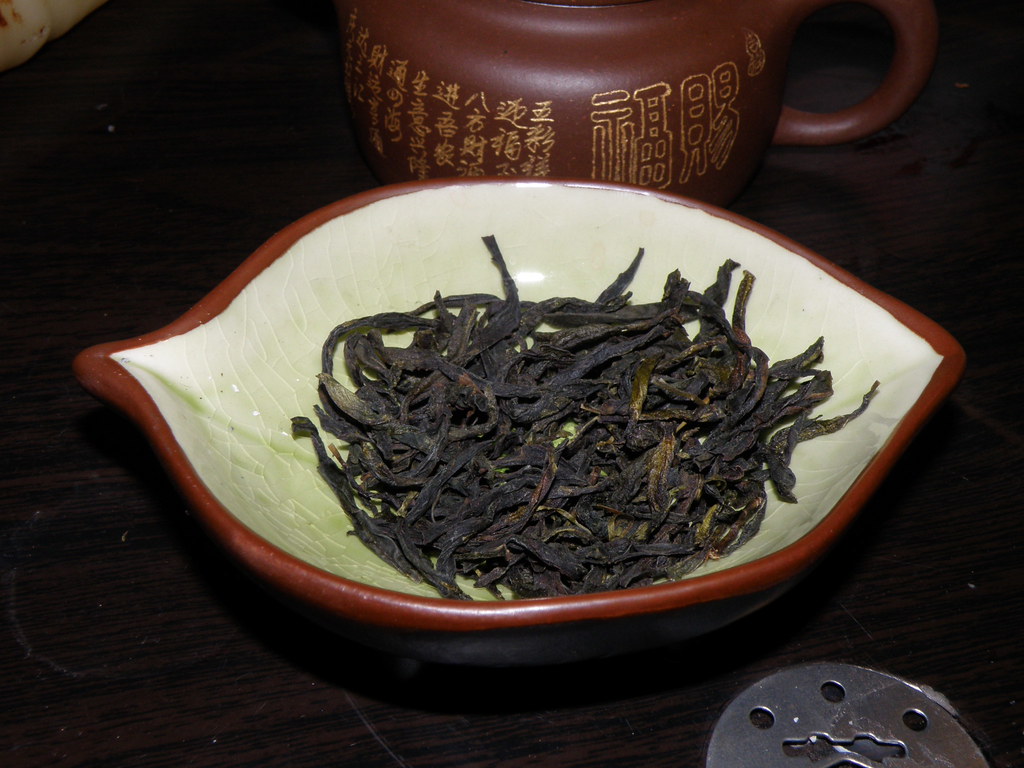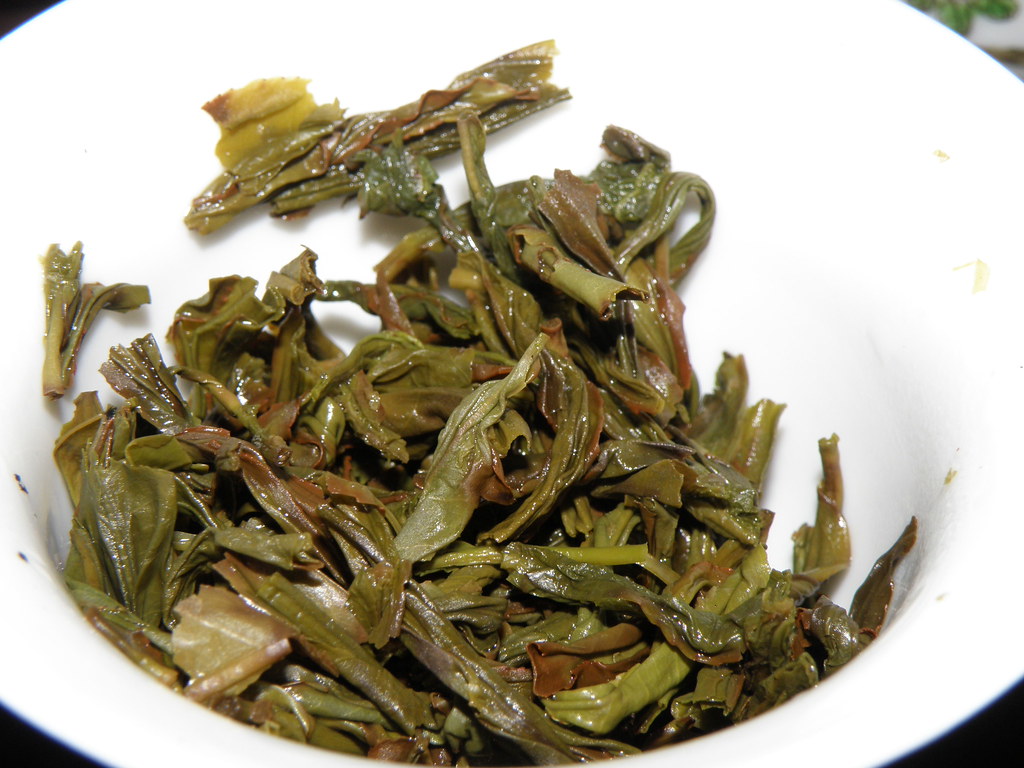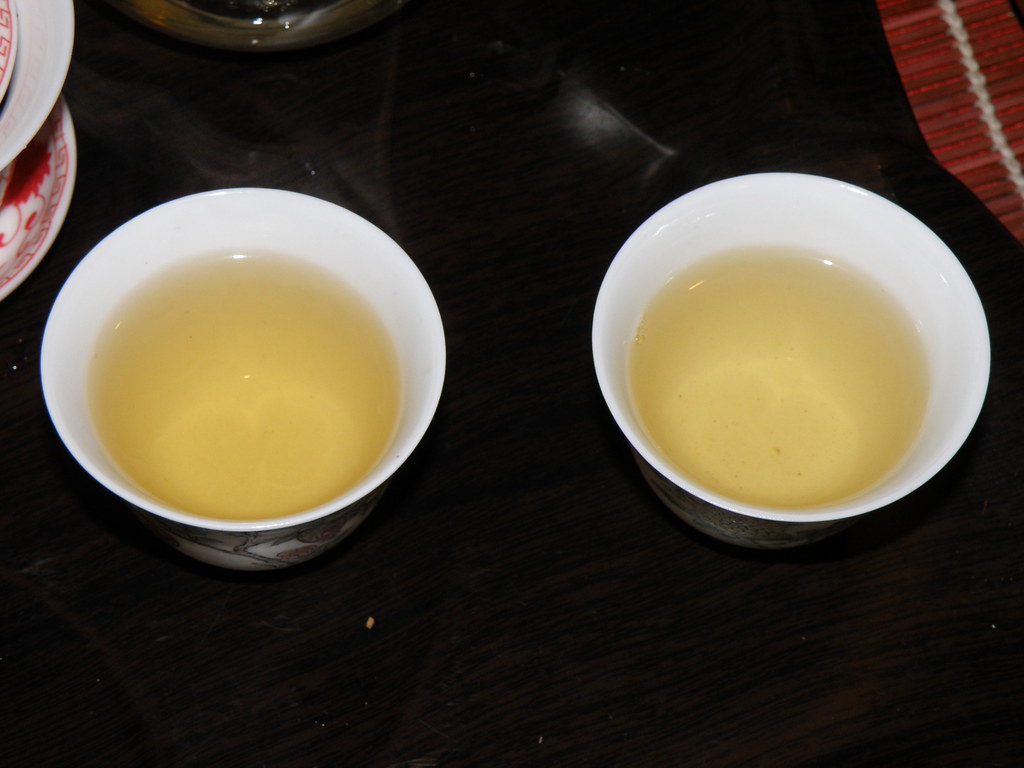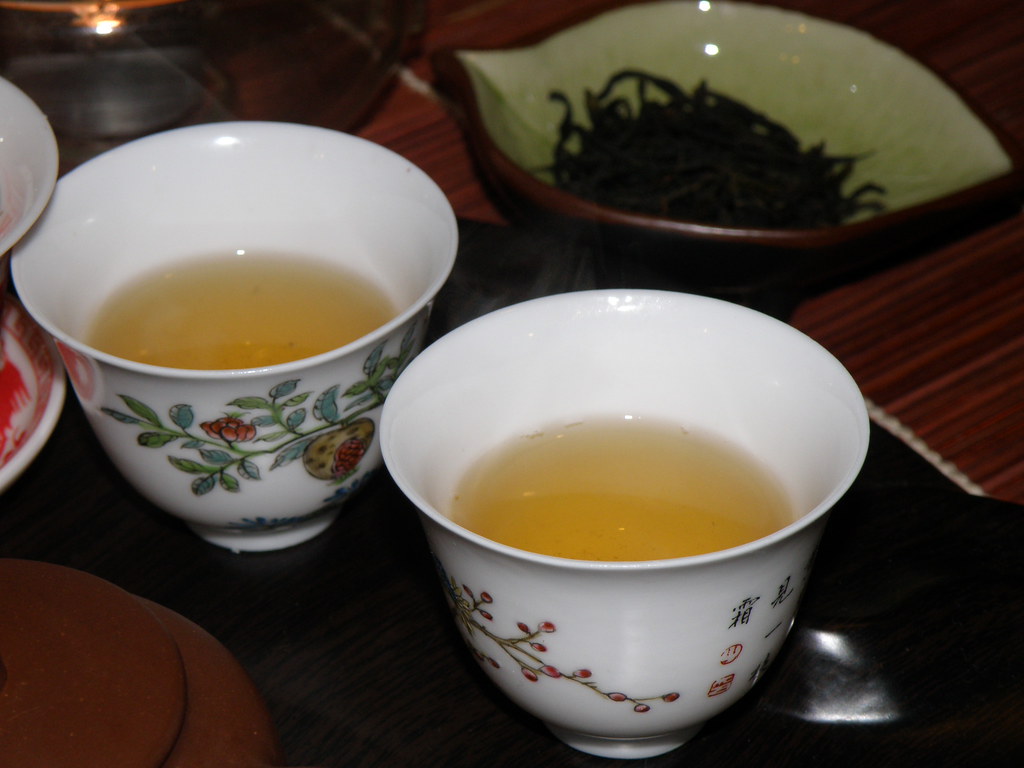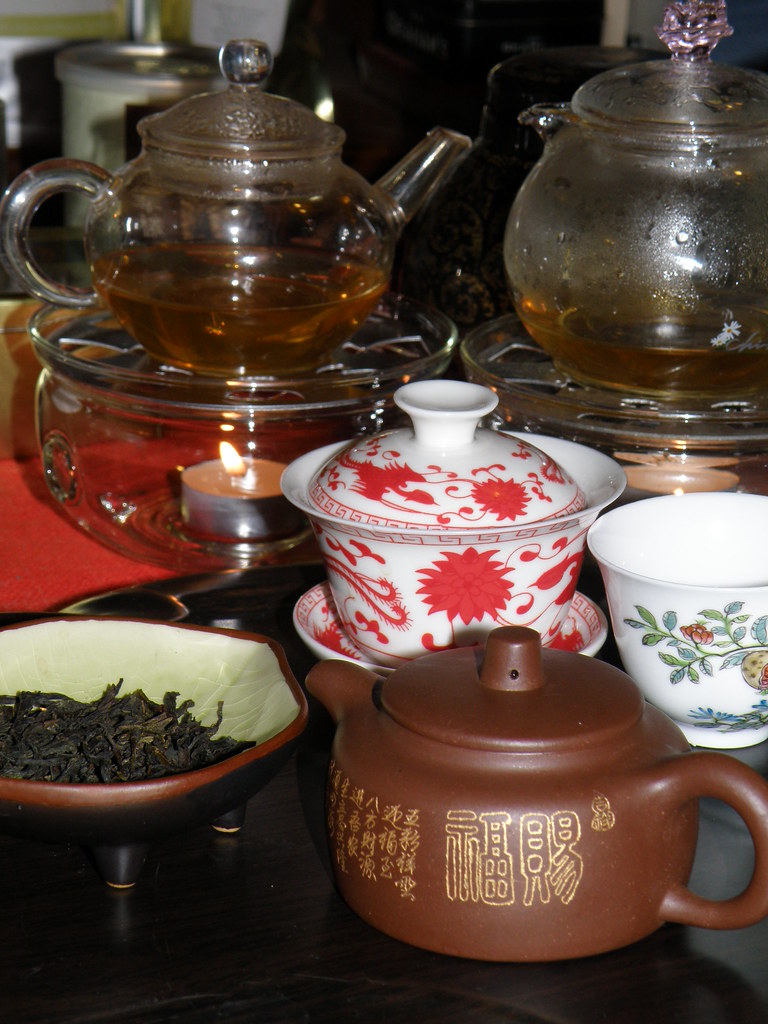http://www.teance.com/Phoenix_Single_Gr ... tea491.htmThis is a dark roast oolong leaf from Phoenix Mountain in Guangdong, China. Plucked from low-yielding, almond fragrance tea trees on Phoenix Mountain in an approximately 300 year old grove. This tea is distinct for its natural almond-like taste; there is no artificial flavoring involved! It is one of over a hundred tea varietals grown only in this Phoenix Mountain area. This tea has a taste that is memorable and complex, woody and slightly astringent intially but with a finish that tastes of raw or toasted almonds depending on the water temperature. A very pleasing, distinctive tea overall.
I had recently been following instructions from fellow DanCong lovers on this site to fairly heavily pack the Gaiwan and do short steeps, and similar heavy levels of leaf in the Yixing.
Recent comments and brewing instructions on sites encountered were suggesting lower levels
and different steeping progressionsteaguy wrote:
#1: The standard ratio of tea to water is 1.5g / 50cc of water. The 10g gaiwan they mention using in their demo is most likely around 350cc. You can estimate the other gaiwans accordingly.
Rinsing the tea first is best used with low or mid-quality teas of dubious sources. If you drink high quality teas (especially certified organic) rinsing removes a lot of the healthy stuff you should be drinking anyway (especially with oolongs). Aged teas, of course, should always be rinsed (sometimes more than once).
http://www.wanlingteahouse.com/english/ ... onal.shtml.
And as my Gaiwan skills need honing, such that I can get the near boiling water to hit the side of the Gaiwan rather than the leaf I was happy to start with the lighter loading.
In a Gaiwan of approx 90ml I used 3 grams and in a 110ml Yixing I used 3.9
So that looks like a good ratio to start brewing with. I will leave the 2 minute infusion to another dayteaguy wrote:d not look too much.
I did a quick rinse with each, then started with 20 seconds on the G and 20 seconds on the Y.
Both were extremely fragrant and pleasant in a weak sort of way, but lacked body and depth. The Y tasted slightly but decidedly to have more substance than the G.
teaguy wrote:ention property of Y as discussed byI decided to vary the times of the next few infusions Y 25, G 28; Y35, G 40; Y50, G60 and finally Y90, G120.teaguy wrote: #4: Clay tends to hold heat better than porcelain, and higher heat draws more flavor out of the tea. Depending (again) on your tastes, you might use slightly shorter brews with the clay pot.
The first thing I noted was that I wasable to get a nice roll going on the leaves in the Gaiwan and hit the side of the Gaiwan away from the leaves without any trouble

Secondly Despite introducing the variable of time between Y and G - the G continued to be lighter and weaker in substance and body than the Y, yet by the 3rd infusion there was no difference in Fragrance.
Thirdly whilst pleasant in a meaningless sort of way, the tea was uninspring and too weak. There was a faint suspicion of Almond - but would I have said Almond if it was not in the title of the tea.
Swapping back and forth whilst tasting and making huge mental notes and assessments that were difficult to think of anything to note, the tea grew cooler and less remarkabl than it had been at the start.
Not a tea I am likely to re-order.
Today I upped the stakes and got better organised 2 tea light warmers waiting for the faircups [in my case these were small glass kettles]
Yixing 6 grams and Gaiwan 4.5 grams.
No Rinse [slightly dubious about this because there were one or distinctly whitish threads amongst the dark leaves]
Straight in with 22 seconds on both, and sitting on their warmers each brew stayed great until the end.
Both started with a much improved overall impression andlooked the same, smelled the same and tasted incredibly similar. The only difference was a marginal superiority of body and depth in the Yixing, but much less significant than yesterday.
Proceeded with brews of 28 seconds each and 35 seconds each AND I can definitely taste Almond it cannot be my imagination it talks loudly of Raw Almond.
Good body though weak in colour, I don't detect any of the astringency mentioned by Teance, I do detect something that might be woody though that was not what came to mind until I read their notes - And I will definitely re-order some of this if it continues to perform as well. oops they have sold out - maybe next year (that is this year Now!
I was surprised that a Dark Roast, with such blackish dry leaves would produce such green looking leaves after the infusionscamera batteries recharging
Do darker roasts tend to result (or not) in much change to the leaf colour [post infusion]?
I will try a few more infusions later, and see if the batteries are charged!
I see that my new loading is similar to Ginko's suggestion -gingko wrote: The common saying is, 7g tea for 120ml gaiwan. 5g tea for 100ml, 10g tea for 150-180ml. But in tea contests, they usually use 5g tea for 120 volume gaiwan. A few people told me in Anxi tea contests, they use minutes-long infusion (I don't remember how many minutes, but >=2), which sounds bazaar, but I believe it's true. But people don't do it in daily life drinking.
